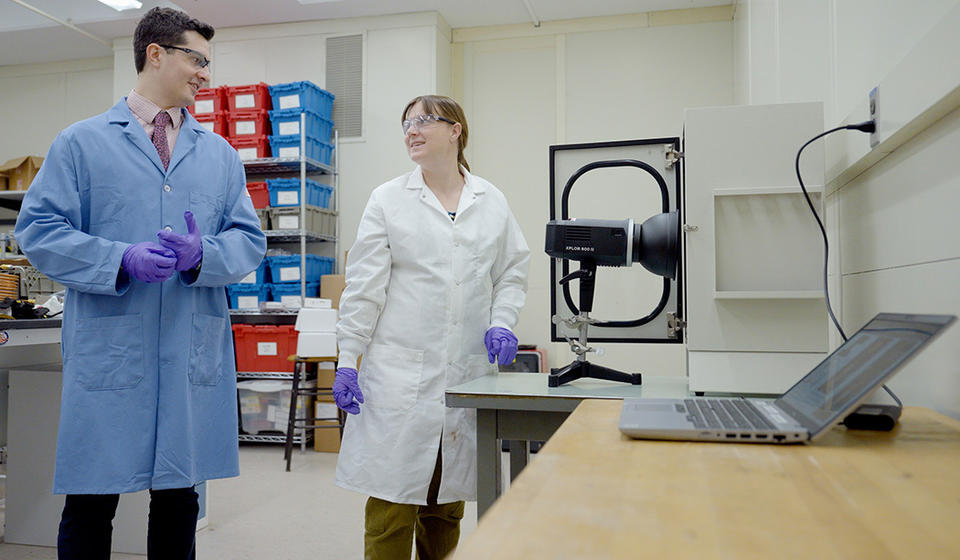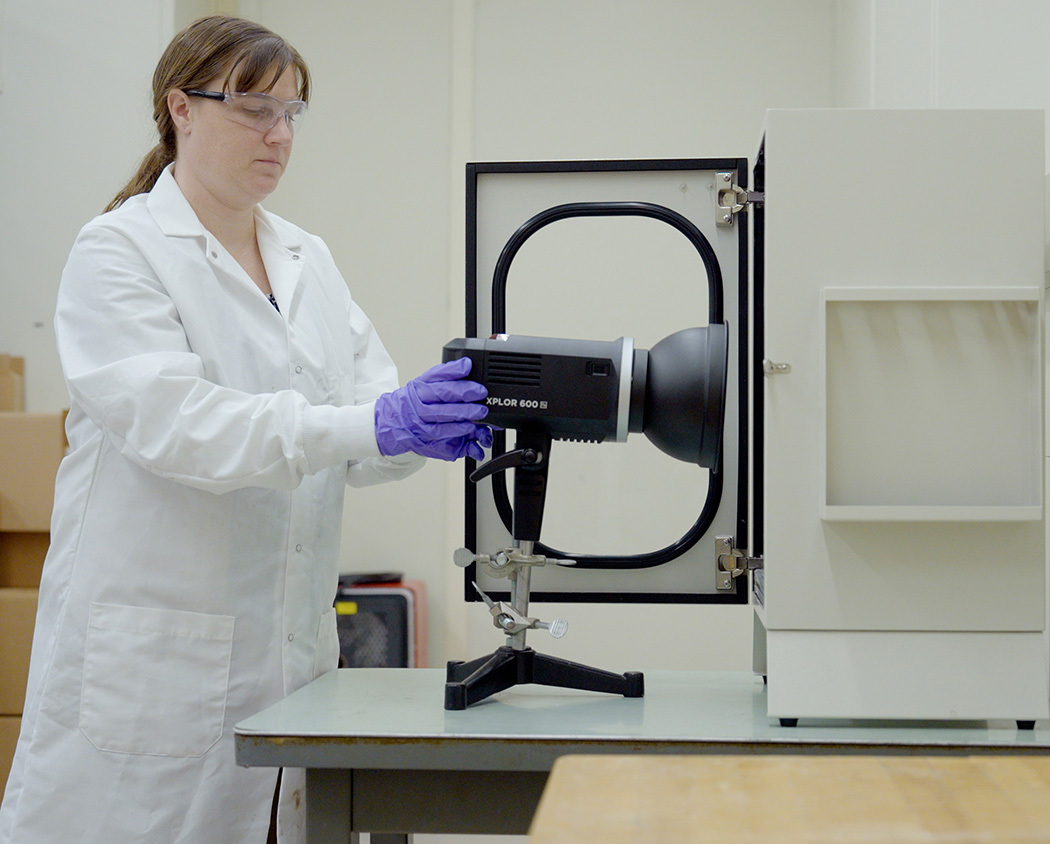Taking Measure
Just a Standard Blog
The Sound of Soot: How a Strange Noise Can Keep Us Safer From Fires

The soot measuring device correlates the noise level to the amount of soot on the surface. The more soot that is present, the louder the noise.
Where there’s smoke, there’s fire. Where there’s fire, there is soot. And where there is soot, there is … noise.
Soot is a critical piece of evidence that forensic fire investigators use to learn where and how fires start and grow over time. And when soot is exposed to a bright flash of light, it makes a popping sound. The energy of the light is easily absorbed by the soot, and the result is an audible noise.
This raises a question — can we measure soot from the sound? For more than a year now, we’ve researched that question, and we created a device and a new approach that will help fire investigators do just that.
We also hope this technique will help us advance general fire research — something that helps keep us all safer from fires. Fire research is important to everyone’s safety, especially with wildfires becoming more common and dangerous.
Follow the Soot
After a fire, firefighters and forensic investigators may look at a soot pattern to learn about the development of the fire.
Until now, investigators have had limited tools to know how much soot they are looking at. Fire investigators analyze images of fire scenes using software. Measuring soot deposited on a black surface is challenging for the software because the soot blends into the background. Other methods require soot samples to be collected and sent to a lab for processing, which is very labor-intensive and time-consuming.
Absorptivity is simply how much energy a surface absorbs, rather than having that energy reflect off or pass through that surface. It’s expressed as a fraction, with the highest possible value being 1. Soot has a particularly high absorptivity, close to the maximum possible value of 1. So, soot absorbs almost all the radiative energy from a light source and converts it to heat. This is similar to the effect of hot, black asphalt in the summer, which absorbs more of the energy from the Sun compared to lighter-colored concrete.
In our technique, we take advantage of soot’s high absorptivity by exposing the soot to light.
The light source in our device is a commercial camera flash like the one that professional photographers use with their cameras. When we manually trigger the flash in front of a surface coated with soot, the light energy is absorbed by the soot due to its high absorptivity. This rapidly adds energy to the soot, causing it to expand. It makes a sound that can be heard and measured with a sensitive microphone mounted near the surface. The phenomenon is called a photoacoustic response.
Validating Measurements
As with all things here at NIST, the measurement is the most important and challenging part of the effort!
The question we had to answer is: Will the noise be louder when there’s more soot deposited on the surface? And would the noise stay the same if the surface material under the soot changed? If not, our approach wouldn’t be particularly useful for fire investigators.
We did several experiments with soot on different surfaces, including drywall board and sheet metal. To get an independent measurement of the amount of soot, we adhered thin aluminum foil targets to the surface and weighed them before and after soot was deposited on the surface. We then exposed the soot-laden surfaces to the flash to measure the photoacoustic response.

This allows us to correlate the noise level to the amount of soot on the surface — the more soot that was present, the louder the noise.
For the different surfaces, we found the photoacoustic response was not affected. This means our device works the same across two different surfaces commonly found in buildings. It’s a safe assumption that our results will be the same on any surface because it’s the soot responding to the light, not the surface.
The fire research community has given us positive feedback on this work and our product. That’s one of the things we love about working at NIST — we get to interact with the people who will benefit directly from our research.
Making a Difference Through Understanding Fires
One of the best things about being a fire researcher is the multidisciplinary nature of this field. Our division at NIST has mechanical engineers, mathematicians, chemical engineers, physicists, environmental engineers and more. We all have different backgrounds and areas of expertise, but we work together on these challenging and important research questions involving fires.
Another aspect of fire research that’s rewarding is being able to see the real-world impact of our work. Fire isn’t abstract; it’s dangerous. Many people’s lives depend on fire safety knowledge and technology.

Ryan leads our work in using AI to make firefighting safer. Amy is studying how wildfires spread via pieces of burning wood, known as firebrands. Her work involves measuring the heat transfer from firebrands that can collect on or around buildings and allow wildfires to spread in communities.
Wildfires have become an important topic area for us here at NIST, not only for their life-threatening destruction of communities and homes but also for their negative effects on air quality. As we’ve seen in the past few summers, wildfires are becoming more frequent and dangerous as the climate changes.
We want to use NIST’s expertise in soot and smoke measurements to gain a better understanding of the air quality issues that come along with wildfires. So, we’re researching how best to measure the emissions of a wildfire, how accurate these methods are and what their limitations are. Using very sensitive instruments, we can take samples and understand what’s in that smoke — and what precautions firefighters and affected communities need to take with the air they’re breathing.
Building fires will always be a serious concern we need to research, and wildfires are becoming an increasingly deadly problem. This research is high-stakes, and we’re committed to learning everything we can to keep communities safer from all types of fires.






